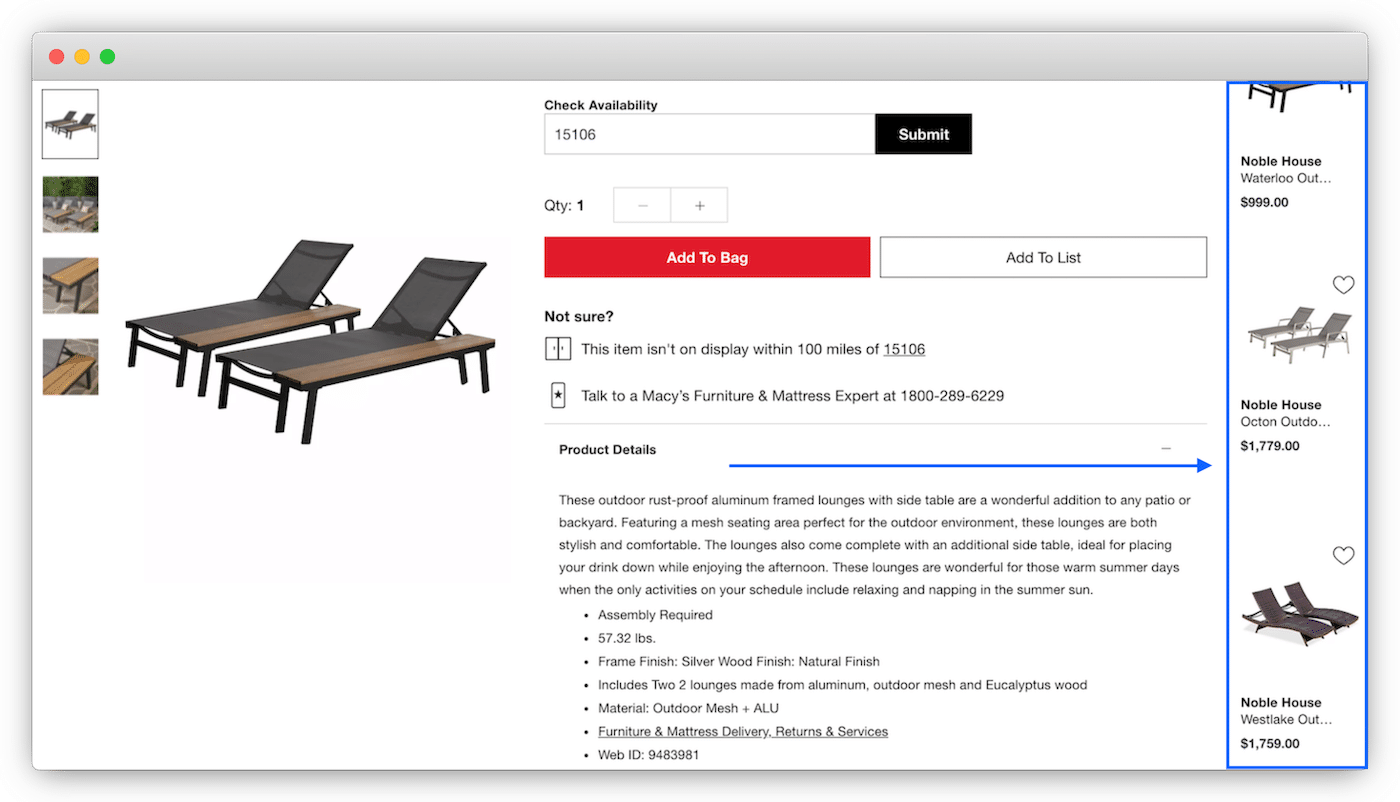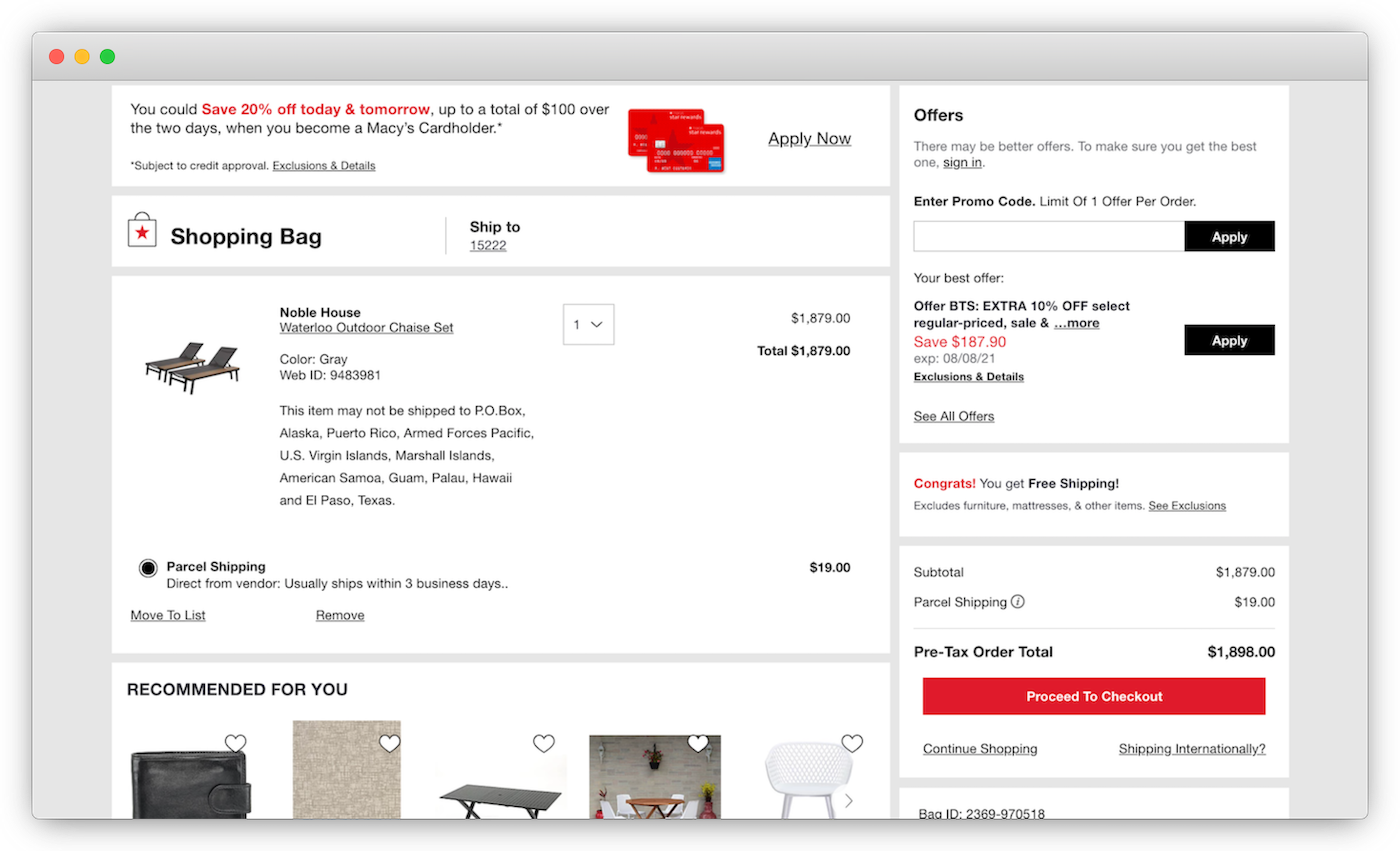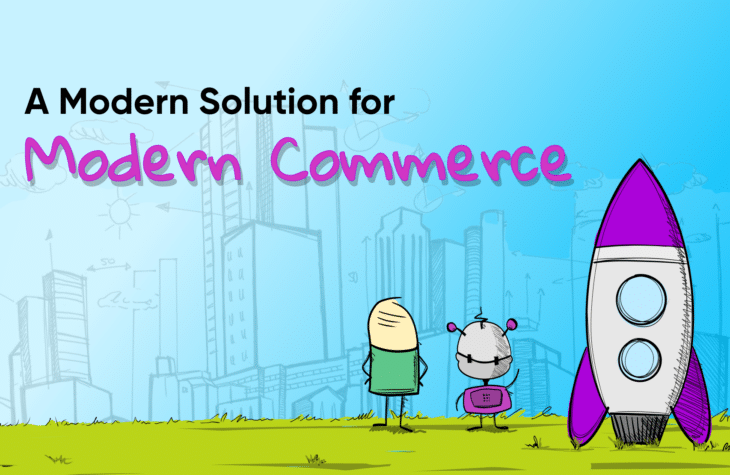Which E-Commerce Pricing Strategy Does Macy’s Use?

Macy’s pricing strategy on its e-commerce site is predicated on a sales-oriented pricing objective using the anchor pricing strategy. This strategy involves showcasing both the original price and discounted price. In doing so, retailers visually emphasize the savings.
This pricing strategy is effective thanks to a psychological occurrence called “anchoring bias,” which is when consumers inherently use the first piece of information given to them to make ensuing decisions. When choosing a retailer, 80% of consumers list competitive pricing as their most crucial store feature. And, with Macy’s, everything is on sale.
In this post, we will break down how Macy’s utilizes downselling to showcase less expensive options, financing to ease the purchase of big-ticket items, and a loyalty program to incentivize future purchases. We will also look at how Macy’s presentation affects the buying experience.
Downselling, Financing, and Loyalty
One way Macy’s employs the anchor pricing strategy on its e-commerce site is by downselling. By comparing the higher-priced item to cheaper alternatives, the retailer highlights the opportunity for more savings. A vertical section on the product detail pages (PDPs) brings these cheaper deals up to capture the shoppers’ focus.
Note: During our site breakdown video, downselling was activated on the PDP sidebar. However, when writing this blog post, upselling was activated. This proves that there is no clear downsell or upsell strategy on PDPs. It is random.
In terms of financing, consumers have the opportunity for interest-free payments with Klarna and 12-month financing for items priced as low as $100. However, this option is only highlighted on the checkout page so shoppers do not know it exists until then.
As for the shopping cart/bag page: free shipping, offers, cross-sells, and loyalty programs are presented, as well as automatically applied discounts.
The bottom line: shop at Macy’s and save. However, some points are misleading. For example, shipping is not actually free and a $19 parcel shipping fee was applied for the chaise lounge set we wanted to buy.
Price vs. Presentation
The site heavily showcases Macy’s discounted pricing strategy but suffers from some visual shortcomings. In particular, PDP images (shown in the first image above) are off to the side and only take up about a third of the product page. And, during the checkout process, the main product image is diluted to a fraction of the page (shown in the second image above).
During our site breakdown, a dilution of the product image correlated to a dilution of our perceived value of the product. In the case of a chaise lounge set costing around $1,000, a minuscule image on the cart and checkout page does not inspire confidence in completing a relatively large purchase, even if the discount is steep.
Key Takeaways
- Macy’s employs the anchor pricing strategy to showcase that everything is on sale.
- Downselling, financing, and a loyalty program all emphasize competitive pricing.
- Focusing on the deal rather than the product (e.g. PDP image) can negatively impact conversions.
- You can use pricing software like fabric Offers to create promotions while using promotion stacking to ensure the best deals are available.

Strategic advisor and CTO @ Foundry. Previously director of consumer shopping experience @ Amazon.







